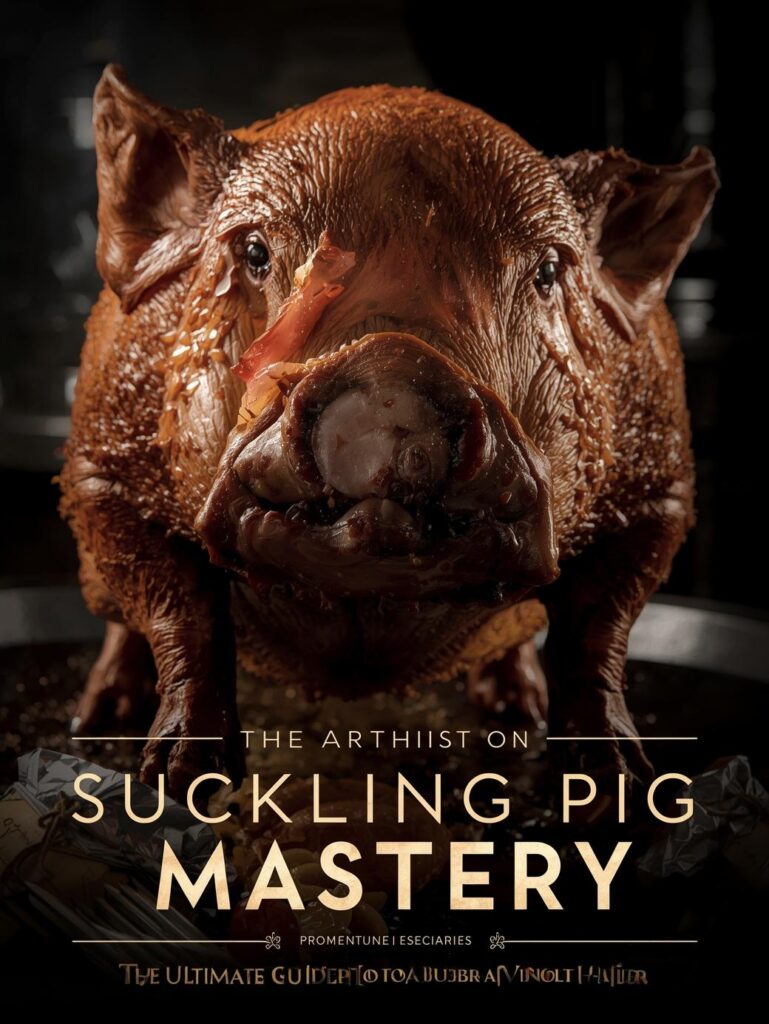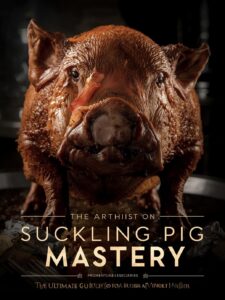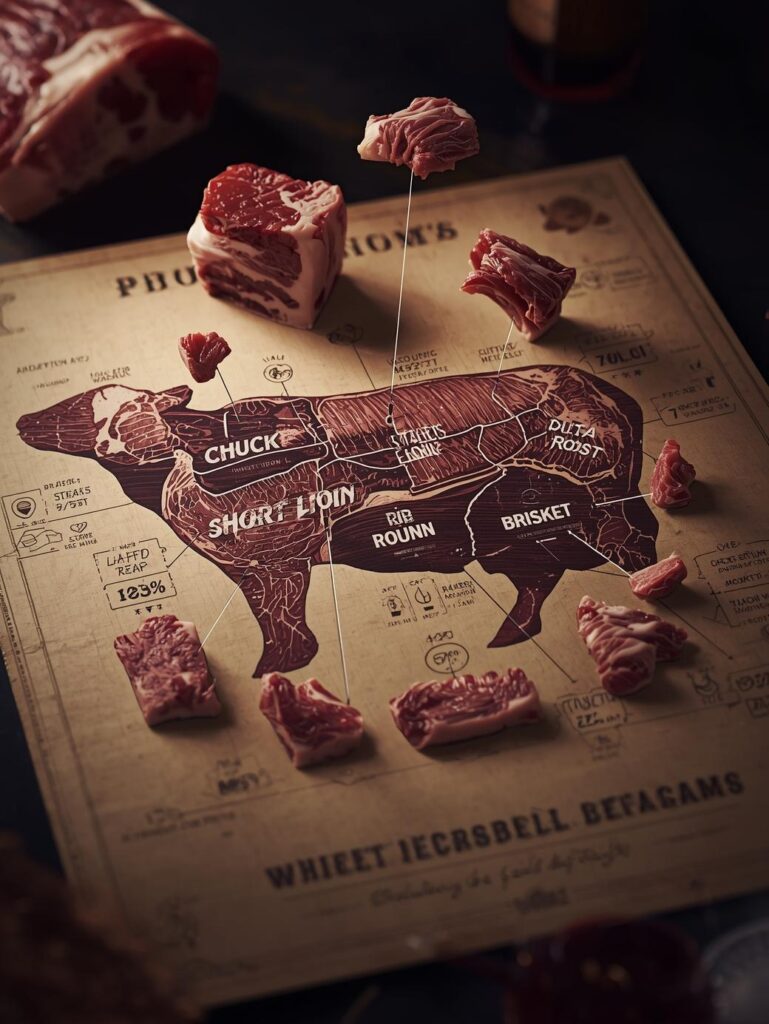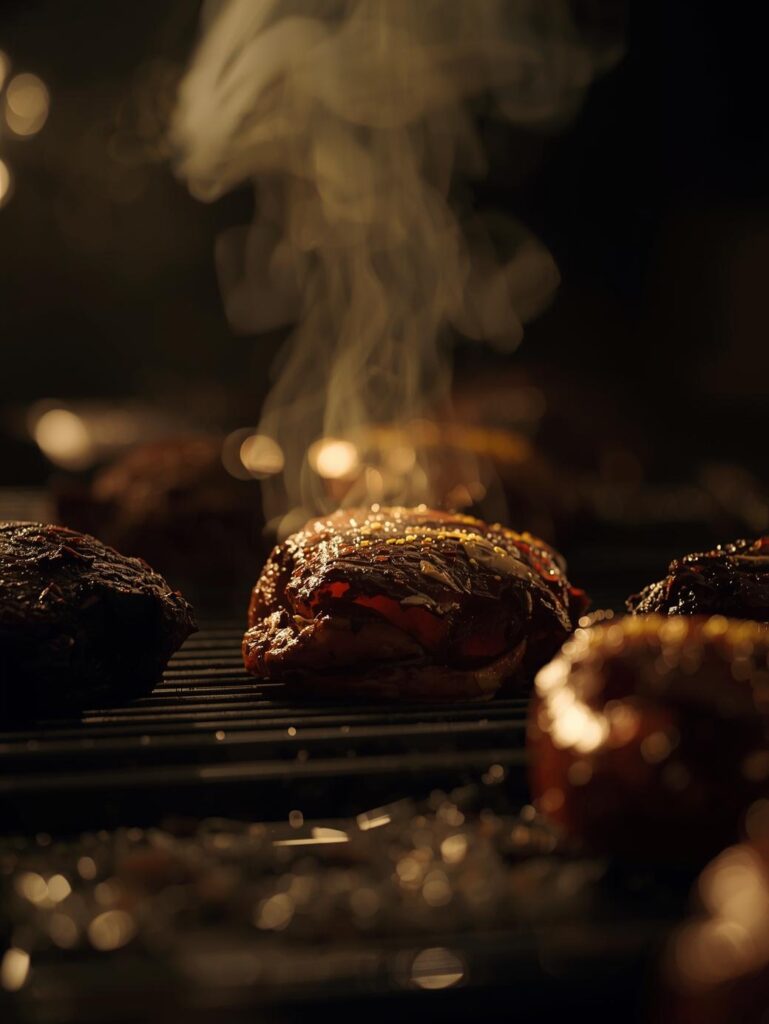The Ultimate Celebration Roast: Cooking a whole piglet isn’t just a meal—it’s an event, a spectacle, and a rite of passage for any serious pitmaster. Where a brisket tests your patience and a steak tests your timing, a suckling pig tests your entire culinary philosophy. This guide transforms this seemingly daunting endeavor into a logical, step-by-step journey to creating the most memorable centerpiece your guests will ever experience.
Suckling Pig Mastery: The Ultimate Guide to Roasting Whole Piglet
“A perfectly roasted suckling pig is the ultimate paradox: skin so crisp it shatters like glass, yet meat so tender it can be pulled apart with a gentle tug. It’s the Mount Everest of home cooking—not because it’s technically difficult, but because it demands perfect planning, unwavering patience, and a touch of ceremonial respect. When you present that golden-brown piglet at the head of the table, you’re not just serving food; you’re creating a legend.”
Suckling Pig Mastery: The Ultimate Guide to Roasting Whole Piglet
Download Our Suckling Pig Quick-Reference - Timeline, Temperatures & Recipe Card
The thought of roasting a whole animal over an open fire is as ancient as cooking itself, yet it remains the most impressive feat in modern BBQ. A suckling pig (typically 12-30 lbs) is the perfect size for a backyard celebration, offering the drama of a whole hog without the logistical nightmare. This guide will walk you through sourcing, prepping, seasoning, and roasting your piglet to crackling-skinned, succulent-meated perfection, turning a primal fear into your signature party trick.
🎯 WHY SUCKLING PIG? THE CULINARY PAYOFF
Understand what makes a piglet the king of celebration roasts.
✅ THE SUCKLING PIG ADVANTAGE
- Perfect Tenderness: Young age means delicate, fine-grained muscle and soft, pliable skin.
- Ideal Fat-to-Meat Ratio: Ample fat layer bastes the meat from within, ensuring juiciness.
- Crispy Skin Potential: Thin, tight skin transforms into the ultimate crackling.
- Manageable Size: Feeds 15-25 people without requiring industrial equipment.
- Unforgettable Presentation: The ultimate “wow factor” for any gathering.
❌ COMMON FEARS & REALITIES
- “It’s too hard” → It’s a simple process, just a long one.
- “I’ll ruin it” → Follow the steps; it’s very forgiving.
- “It’s expensive” → Cost per person is often less than premium steaks.
- “It’s gruesome” → It’s the ultimate respect for the animal—nose-to-tail.
- “I need a caja china” → You can use a grill, oven, or smoker.
🔪 SOURCING & PREP: THE FOUNDATION OF PERFECTION
90% of success happens before the fire is lit.
⚡ The 5 Critical Pre-Roast Steps
Don’t Skip Any of These – They’re Non-Negotiable
- Source Responsibly: Order from a reputable butcher or farm 1-2 weeks ahead. Request a 15-20 lb piglet, which is the ideal balance of size and cook time. Ensure it’s properly cleaned and dressed.
- Thaw Safely & Slowly: If frozen, thaw in refrigerator for 2-3 days. Place on a rack over a sheet pan to catch drips.
- Dry the Skin Overnight: This is the **most important step** for crispy skin. Pat completely dry, leave uncovered on a rack in the fridge for 12-24 hours. The skin should feel like parchment.
- Score the Skin: Use a very sharp utility knife or razor blade. Score the skin in a 1-inch diamond pattern, cutting through the fat but not into the meat. This allows fat to render and skin to puff.
- Season Aggressively: Rub the cavity generously with salt, aromatics (garlic, citrus, herbs), and your chosen dry rub. Be more conservative with salt on the skin to prevent burning. Create your own signature rub here.
🔥 THE ROASTING MATRIX: CHOOSE YOUR METHOD
There are multiple paths to piglet perfection.
🎯 Suckling Pig Cooking Methods Compared
🎯 Three Paths to Perfect Piglet
| Method | Temperature/Time | Best For | Pros | Cons |
|---|---|---|---|---|
| La Caja China | 300°F for 3-4 hours | Efficiency, large crowds | Fast, incredibly crispy skin | Less smoky flavor, special equipment needed |
| Smoker / Indirect Grill | 250°F for 5-6 hours | Smoke flavor enthusiasts | Amazing smoke flavor, traditional BBQ | Longer cook, skin can be less crisp |
| Oven Roasting | 325°F for 4-5 hours | Consistency, bad weather | Controlled environment, reliable | No smoke flavor, less “event” drama |
| Spit Roast | Medium heat for 4-5 hours | The ultimate spectacle | Even cooking, self-basting, incredible show | Requires special equipment, constant attention |
🌡️ THE TEMPERATURE TIMELINE: A PATH TO PERFECTION
This is a low-and-slow cook, followed by a high-heat finish.
👨🍳 Step-by-Step Temperature Guide (For Smoker/Indirect Grill)
The Two-Stage Cook: Tender Meat THEN Crispy Skin
- Stage 1: The Low & Slow Render (Hours 1-4): Cook at 225-250°F. The goal is to slowly render the fat and break down connective tissue without burning the skin. Use fruitwoods like apple or cherry for a mild, sweet smoke. Wood pairing guide here.
- Stage 2: The Temperature Climb (Hours 4-5): Gradually increase the temperature to 300°F. The internal meat temperature should be around 160°F in the shoulder.
- Stage 3: The Crispy Skin Blast (Final 30-60 mins): Crank the heat to 375-400°F. Watch the skin closely as it blisters and puffs into crackling. The internal temperature in the shoulder should reach 185-195°F for pull-apart tender meat. Internal temp guide.
- Stage 4: The Critical Rest (30-45 minutes): Tent loosely with foil and rest on a large cutting board. This allows juices to redistribute. Do not cover tightly or you will steam the crispy skin.
📊 THE PIGLET PROJECT MASTER TIMELINE
🎯 Countdown to Celebration (For a 6 PM Serving Time)
| Time Before Serve | Task | Critical Details | Status Check |
|---|---|---|---|
| 2-3 Days Before | Thaw Piglet | In refrigerator on rack over pan | Completely pliable, cold to touch |
| 1 Day Before | Dry & Season | Pat dry, score skin, season cavity, return to fridge uncovered | Skin is dry and tight |
| 6-7 Hours Before | Start the Fire | Bring smoker/grill to 250°F, add wood chunks | Stable temperature, clean smoke |
| 5-6 Hours Before | Put Pig On | Place pig belly-down (spatchcocked) on grate | |
| 1.5 Hours Before | Crank the Heat | Increase temp to 375°F for crispy skin | Skin is bubbling and browning |
| 45 Minutes Before | Check & Rest | Internal temp 185°F+ in shoulder, remove, tent, rest | Juices pooling, skin audibly crackling |
| SHOWTIME | Carve & Serve | Present whole, then carve for guests | Meat pulls easily, skin shatters |
🚨 SUCKLING PIG TROUBLESHOOTING: FIX COMMON ISSUES
🎯 Piglet Roasting Rescue Guide
| Problem | Cause | Immediate Fix | Prevention |
|---|---|---|---|
| Leathery, Tough Skin | Insufficient final heat blast | Carefully broil or use a torch to puff skin | Ensure skin is bone-dry, use high-heat finish |
| Burnt Skin, Raw Meat | Heat too high too soon | Tent dark areas with foil, lower heat | Low & slow first, then high heat finish |
| Pale, Rubbery Skin | Skin wasn’t dried properly | Pat dry, rub with oil, blast with heat | Overnight uncovered drying in fridge |
| Dry Shoulder Meat | Overcooked | Shred and mix with sauce or drippings | Cook to 185-195°F, not beyond |
| Uneven Cooking | Poor heat distribution | Rotate the pig halfway through cooking | Spatchcock (butterfly) for even thickness |
🍽️ CARVING & SERVING: THE GRAND FINALE
The presentation is part of the meal.
🎯 The Butcher’s Carving Technique
Serve with Confidence and Flair
- Present Whole First: Carry the golden-brown piglet to the table on a large platter or cutting board. Let guests take photos—you’ve earned it.
- Remove the Crackling: Using kitchen shears or a sharp knife, carefully remove the entire sheet of crispy skin in large pieces. Break it into shards for serving.
- Separate the Primaries: Remove the shoulders and hams (hind legs) by cutting through the ball-and-socket joints. These can be pulled or sliced.
- Slice the Loin: Carve the meat along the backbone into elegant, tender slices.
- Don’t Forget the Cheeks: The face holds incredibly tender, flavorful meat—a prize for the guest of honor.
- Serve Family-Style: Arrange the different cuts and crackling on a large serving platter. Provide sharp steak knives for the crackling. More carving tips here.
🏁 THE ULTIMATE CELEBRATION CENTERPIECE
Roasting a whole suckling pig is more than a cooking method—it’s a culinary event that connects you to centuries of tradition. The process demands planning, patience, and respect, but the reward is an unparalleled eating experience and a story that will be told for years. The combination of shattering crackling, succulent meat, and the sheer spectacle of the presentation creates a meal that transcends food and becomes a memory.
Your first piglet roast will teach you more about heat management, butchery, and patience than a dozen briskets. And when you see the look on your guests’ faces as you bring that golden-brown masterpiece to the table, every minute of the process will be worth it. This isn’t just dinner; it’s your entry into the pantheon of legendary pitmasters.
🐖 MASTER WHOLE ANIMAL BUTCHERY →
Take your skills to the next level with our complete nose-to-tail guide
Continue Your Whole-Animal Journey: Build on this skillset with these essential guides.







